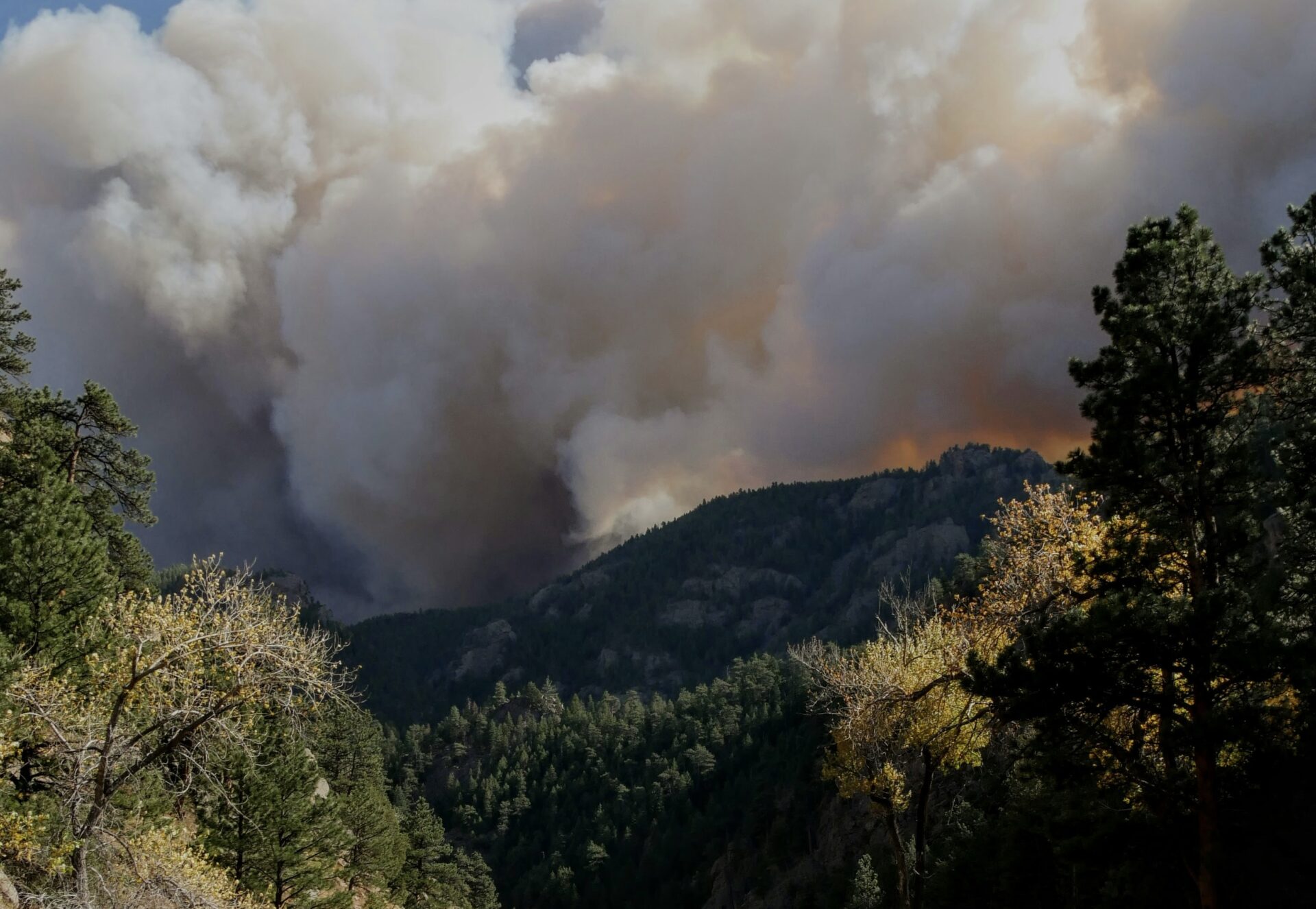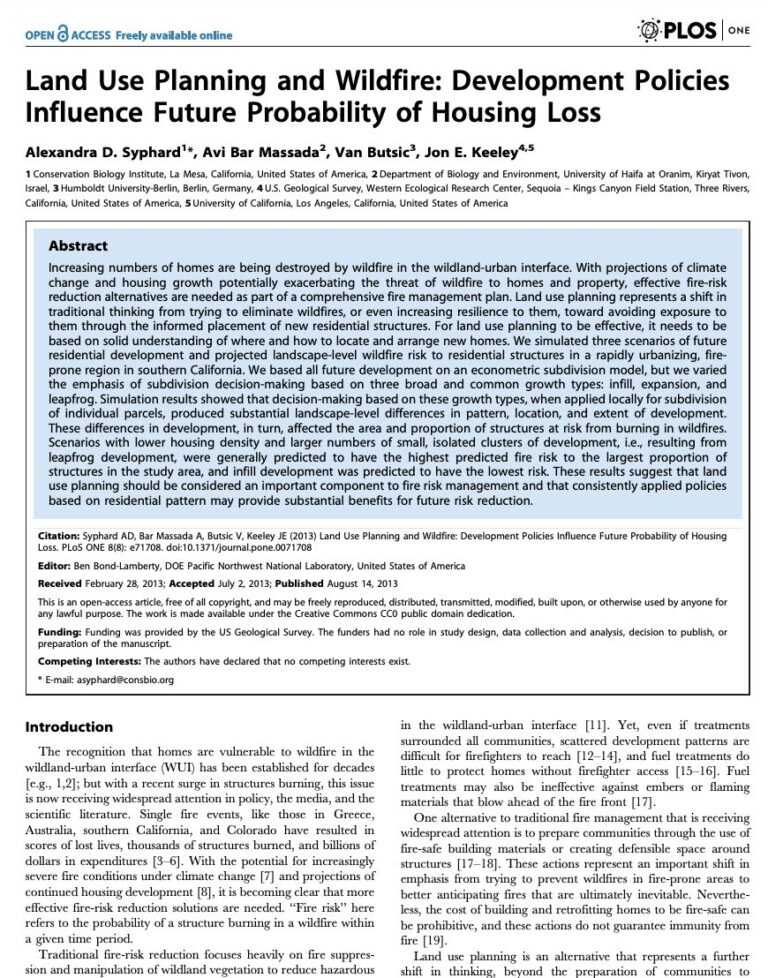Increasing numbers of homes are being destroyed by wildfire in the wildland-urban interface. With projections of climate change and housing growth potentially exacerbating the threat of wildfire to homes and property, effective fire-risk reduction alternatives are needed as part of a comprehensive fire management plan. Land use planning represents a shift in traditional thinking from trying to eliminate wildfires, or even increasing resilience to them, toward avoiding exposure to them through the informed placement of new residential structures. For land use planning to be effective, it needs to be based on solid understanding of where and how to locate and arrange new homes. We simulated three scenarios of future residential development and projected landscape-level wildfire risk to residential structures in a rapidly urbanizing, fire-prone region in southern California. We based all future development on an econometric subdivision model, but we varied the emphasis of subdivision decision-making based on three broad and common growth types: infill, expansion, and leapfrog. Simulation results showed that decision-making based on these growth types, when applied locally for subdivision of individual parcels, produced substantial landscape-level differences in pattern, location, and extent of development. These differences in development, in turn, affected the area and proportion of structures at risk from burning in wildfires. Scenarios with lower housing density and larger numbers of small, isolated clusters of development, i.e., resulting from leapfrog development, were generally predicted to have the highest predicted fire risk to the largest proportion of structures in the study area, and infill development was predicted to have the lowest risk. These results suggest that land use planning should be considered an important component to fire risk management and that consistently applied policies based on residential pattern may provide substantial benefits for future risk reduction.
Land Use Planning and Wildfire: Development Policies Influence Future Probability of Housing Loss


